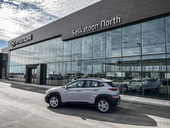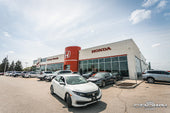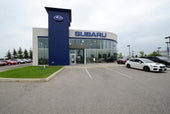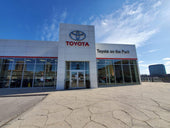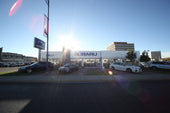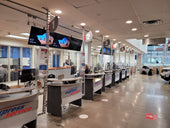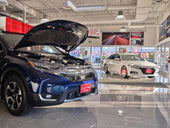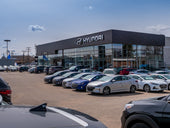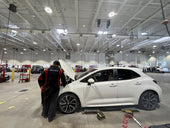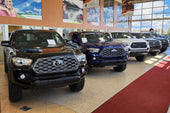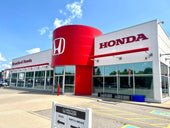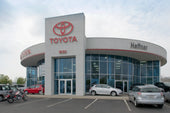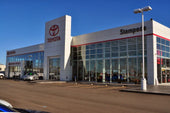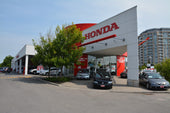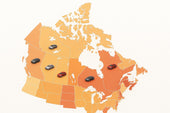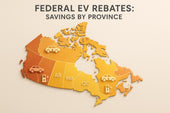Dealer markups in Canada can add thousands to the cost of a new car, often disguised as "market adjustments" or bundled fees. By May 2025, the average new car price hit $48,800 - $10,000 more than pre-pandemic levels. Surveys show 36.6% of buyers paid above MSRP, with 85% of markups ranging from $1,000 to over $10,000. Additionally, 41.3% were forced to buy dealer-added products, further inflating costs.
Here’s how to avoid overpaying:
- Understand Pricing Terms: Learn the difference between invoice price (what dealers pay) and MSRP (the suggested retail price). Dealers profit from the gap and add markups during tight inventory or high demand.
- Spot Hidden Fees: Look for vague charges like "market adjustment" or overpriced add-ons. Many extras, such as paint protection or extended warranties, are optional and often overpriced.
- Negotiate Effectively: Research invoice prices, challenge unnecessary fees, and time your purchase strategically (e.g., end of the month). Be prepared to walk away if the deal isn’t fair.
- Use Tools for Transparency: Platforms like Price Driven offer detailed invoice pricing, hidden incentives, and pre-negotiated deals, saving buyers an average of $700.
Dealer markups are legal but avoidable with preparation. By staying informed, scrutinizing fees, and negotiating confidently, you can save thousands on your next car purchase.
How Dealer Markups and Pricing Work
What Are Dealer Markups?
Dealer markup refers to the extra amount a dealership adds on top of the vehicle's invoice price - or even the manufacturer's suggested retail price (MSRP) - to boost their profits. This is especially common when certain models are in high demand or when inventory is limited.
The MSRP is essentially the manufacturer's recommended price for selling the vehicle. However, dealers purchase vehicles at a lower invoice price. The difference between the invoice price and the MSRP, plus any additional markup the dealer applies, forms their profit margin. When supply is tight and demand is high, dealers often feel justified in charging more.
These markups are not always straightforward. They might be listed as separate charges on your invoice or bundled into fees like documentation charges or protection packages. To better understand these costs, it’s essential to get familiar with the pricing terms used by dealerships.
Common Pricing Terms You Need to Know
When reviewing vehicle pricing documents in Canada, knowing a few key terms can make a big difference:
- Market Adjustment: A fee added to account for increased demand or limited supply. This is often listed as a separate line item on the vehicle's window sticker.
- Additional Dealer Markup (ADM) and Additional Dealer Profit (ADP): Terms that indicate extra charges the dealer adds to increase their profit.
- Adjusted Market Value: A term suggesting that the original MSRP no longer reflects current market conditions.
In Canada, all new vehicles must legally display the MSRP on the window sticker. However, dealers can add extra markups in other documentation or fee schedules. Carefully reviewing all line items is crucial to avoid unexpected charges. Understanding these terms will also prepare you to evaluate the pricing gap between the invoice price and the MSRP.
Invoice Price vs. MSRP: The Pricing Gap
The invoice price is the amount the dealer actually pays for the vehicle. This figure may also include hidden incentives or factory discounts that reduce the dealer's true cost. The MSRP, on the other hand, is the price the manufacturer suggests the vehicle should sell for. The difference between these two prices represents the dealer's potential profit margin - and understanding this gap can give you an edge during negotiations.
For instance, consider a vehicle with an MSRP of $35,000 and an invoice price of $32,000. This creates a $3,000 base margin for the dealer. If they add a $2,000 market adjustment fee, your final price jumps to $37,000.
"With Price Driven, you'll see the dealer's actual cost for ANY new car in Canada including hidden incentives and factory discounts. No more wondering if you're overpaying."
Having access to detailed invoice pricing can significantly improve your bargaining power. In fact, buyers who use this information save an average of over $700 when purchasing a new vehicle compared to those who negotiate without it. By understanding the pricing gap, you can identify genuine discounts and avoid paying for unnecessary markups. This knowledge equips you to use invoice data effectively during negotiations.
Hidden cameras show some car dealers adding charges to ad price
Why Dealers Add Markups in Canada
Knowing why dealerships in Canada apply markups can help you spot inflated pricing and identify opportunities to negotiate. Several factors contribute to these pricing strategies across the country.
Supply and Demand Effects
One of the main reasons for dealer markups in Canada is the classic economic principle of supply and demand. When dealerships have limited stock of in-demand vehicles, they often raise prices above the Manufacturer's Suggested Retail Price (MSRP). With fewer alternatives available, this limited supply becomes a bargaining chip for dealers.
Markups are especially common on all-new or redesigned models with tight inventory. When demand outpaces supply, dealerships gain significant pricing power. Timing your purchase can make a big difference - dealers with low inventory are less likely to negotiate and more likely to stick to full MSRP or add markups. On the other hand, brands with ample inventory may be more open to price discussions. By understanding these cycles, you can plan your purchase during periods of higher inventory or lower demand, increasing your chances of securing better pricing and avoiding unnecessary add-ons. These supply-driven markups also contribute to regional price variations.
Regional Price Differences
Geography plays a big role in pricing strategies. Canada's vast size and varying population densities create distinct regional pricing patterns. In areas with multiple dealerships selling the same brand, competition tends to drive prices closer to MSRP or even lower. However, in smaller markets or regions with limited dealership options, individual dealers often charge higher markups because consumers have fewer alternatives.
Inventory levels also vary by region. Dealerships in provinces or cities with larger stocks are more likely to negotiate or stick to MSRP, while those in areas with limited inventory of popular models can charge a premium simply because of scarcity.
Dealer-Added Features and Extra Fees
Beyond supply and regional factors, dealerships in Canada often boost profits through add-ons and extra fees. A 2023 survey found that 41.3% of consumers were required to pay for dealer extras like extended warranties and protection packages, with over 60% of these add-ons costing between $1,000 and $3,000 or more.
Common add-ons include delivery fees, window tinting, ceramic coating, seat-fabric protection, VIN etching, and pin striping. While some of these services might provide real benefits, dealerships often inflate their prices or present them as mandatory when they’re actually optional.
The vehicle delivery process is another area where fees can add up. With 54.5% of consumers needing to order vehicles and wait for delivery, some dealers justify extra charges for expedited delivery or special handling. Protection packages and warranty products are also frequently bundled into financing, making their true cost less obvious. These fees can significantly increase the final price, often without providing equivalent value.
Common Dealer Markup Tactics
Knowing how dealerships inflate prices can help you spot and avoid unnecessary charges. In Canada, dealerships often rely on well-established strategies to increase prices, particularly targeting buyers who may not be familiar with standard pricing practices. Let’s break down how these tactics work and how they can affect the final price.
Pricing Above MSRP for Popular Models
One of the simplest ways dealers inflate prices is by charging more than the manufacturer's suggested retail price (MSRP). These extra charges often show up as a second window sticker with labels like "market adjustment", "ADM", or "adjusted market value".
Recent data reveals that 36–37% of Canadian buyers have paid above MSRP for new vehicles, with 85% of those markups ranging from $1,000 to over $10,000. Popular SUVs and new releases - especially from Asian and European luxury brands - are the most affected, as inventory shortages keep demand high.
In May 2025, the average price for a new car in Canada hit around $48,800 - roughly $10,000 higher than pre-pandemic levels. For electric vehicles, the average was even steeper at $57,700. According to Cox Automotive, a $40,000 car could see an additional $6,000 tacked on due to markups and market conditions.
Dealerships also use bundled add-ons to further increase costs.
Overpriced Add-On Packages
Bundled add-ons are another common way dealerships boost profits. These packages often include items like extended warranties, paint protection, rustproofing, tire and wheel packages, and various insurance products. While the products themselves may be useful, the pricing and presentation are the real issues.
Bundling makes it tough to evaluate the cost of individual items. Some dealers even claim certain add-ons are mandatory or refuse to provide a price breakdown - a clear warning sign of inflated costs. For instance, independent shops might charge about $200 for window tinting, while dealerships charge $800. Similarly, paint protection could cost around $1,500 at a dealership, compared to roughly $400 elsewhere. Extended warranties, in particular, can be marked up by 200–300% compared to third-party options.
Beyond bundled add-ons, hidden fees often appear unexpectedly during the transaction process.
Hidden Market Adjustment Fees
One of the more deceptive tactics involves fees that are vaguely labelled and disclosed late in the buying process. These "market adjustment fees" are additional charges on top of MSRP, often justified as reflecting local demand or inventory shortages. Other hidden fees might appear as "dealer profit" charges, "market conditions" adjustments, or simply "additional fees" with little to no explanation.
Some provinces, like Quebec, have "all-in" pricing laws that require advertised prices to include all fees except taxes and licensing. However, there is no federal law against selling vehicles above MSRP, and enforcement differs across provinces. These fees are often revealed during financing discussions or at the final contract stage, leaving many buyers feeling pressured to accept them rather than start their search over.
By understanding these tactics, you can better prepare to negotiate and avoid surprises at the dealership.
| Tactic | Typical Cost Range | Presentation |
|---|---|---|
| Above-MSRP Pricing | $1,000 – $10,000+ | Second window sticker; "market adjustment" line item |
| Overpriced Add-Ons | $1,000 – $3,000+ | Bundled packages; claimed as "mandatory" extras |
| Hidden Adjustment Fees | $500 – $5,000+ | Vaguely described fees disclosed late in the process |
sbb-itb-20f5d75
How to Negotiate Lower Dealer Markups
Getting a better deal on a vehicle requires preparation and good timing. To negotiate effectively, you need to approach the process with confidence and solid information that strengthens your position.
Research Invoice Prices and Rebates
Knowing what dealers actually pay for their vehicles gives you a significant advantage during negotiations. The invoice price - essentially what the dealer pays the manufacturer - is often much lower than the MSRP. This gap represents your opportunity to negotiate. However, the real cost to the dealer is often even lower due to hidden incentives, factory discounts, and holdback payments that further reduce their expenses.
Having access to detailed invoice pricing allows you to negotiate with confidence. If you know the true cost of the car, including hidden discounts and incentives, you’re in a much stronger position to challenge inflated markups. This transparency removes the guesswork and reduces the stress of back-and-forth haggling.
Government rebates and manufacturer incentives can also help offset dealer markups. For example, federal and provincial rebates for electric vehicles can significantly lower the overall price, even if the dealer has added a markup. Since these programs vary by province and change frequently, it’s worth researching the latest rebates before heading to the dealership.
"Knowing how much discount there is, helps with negotiating the price." - Michael S, Customer, Vancouver, BC
Price Driven’s discount reports are a valuable resource. They reveal dealer-level pricing and hidden incentives, often saving buyers over $700 per vehicle. In April 2025 alone, 26 out of 32 reports showed buyers making smarter decisions. With this kind of information, you can confidently challenge every fee on your deal.
Challenge All Extra Fees
Scrutinize every fee listed on your purchase agreement. Canadian dealerships often add various charges, such as administration fees, documentation costs, freight charges, and "market adjustment" fees, many of which may be inflated or unnecessary. According to a 2023 Car Help Canada survey, 41.3% of buyers were required to purchase dealer products, with more than 60% of these add-ons costing between $1,000 and $3,000.
Ask for a detailed explanation of all fees and question their necessity. For example, if a dealer insists on a $1,000 paint protection package, request its removal or negotiate a significant discount. Many dealers claim certain fees or add-ons are mandatory, but this is often not the case.
Pay close attention to vague charges like "market conditions" adjustments or "additional dealer profit" fees. These are often pure markups with no real value attached. Being ready to walk away from deals with excessive fees shows that you’re serious and not afraid to take your business elsewhere. This tactic can push dealers to offer better terms.
Use Timing and Walking Away as Tools
Timing can play a crucial role in negotiations. Dealers often have monthly, quarterly, and year-end sales targets, which makes them more eager to close deals as these deadlines approach. Shopping during the final days of the month or during slower periods, such as winter, can give you more leverage since dealers may prioritize hitting their quotas over maximizing profits.
Walking away is another powerful tool. If you’re prepared to leave without making a purchase, dealers are more likely to lower their prices or reduce fees. This strategy works best when you’ve done your homework and can clearly explain why the pricing doesn’t meet your expectations.
To strengthen your position, come prepared with alternative options. Quotes from other dealers or knowledge of similar models with comparable features can give you additional leverage. If one dealership won’t negotiate fairly, you’ll have other options to explore.
Customers who have access to detailed pricing information often report low stress and minimal need for negotiation, while those without this data experience higher stress and greater reliance on their negotiation skills.
"The transparent pricing gave me confidence, and the pre-negotiated deal saved me hundreds." - Lucas H, Customer, London, ON
Ultimately, successful negotiation comes down to preparation and persistence. Dealers are more likely to respect customers who are informed and reasonable, making the entire process smoother and more productive for everyone involved.
Using Tools for Clear Pricing
Once you've mastered negotiation tactics, modern tools can take the guesswork out of car buying by offering clear, upfront pricing. Traditionally, the car-buying process has favoured sellers, keeping pricing details opaque. Today, online tools have changed the game by revealing dealer costs and hidden incentives, making the process far more transparent and straightforward.
How Price Driven Simplifies Car Buying
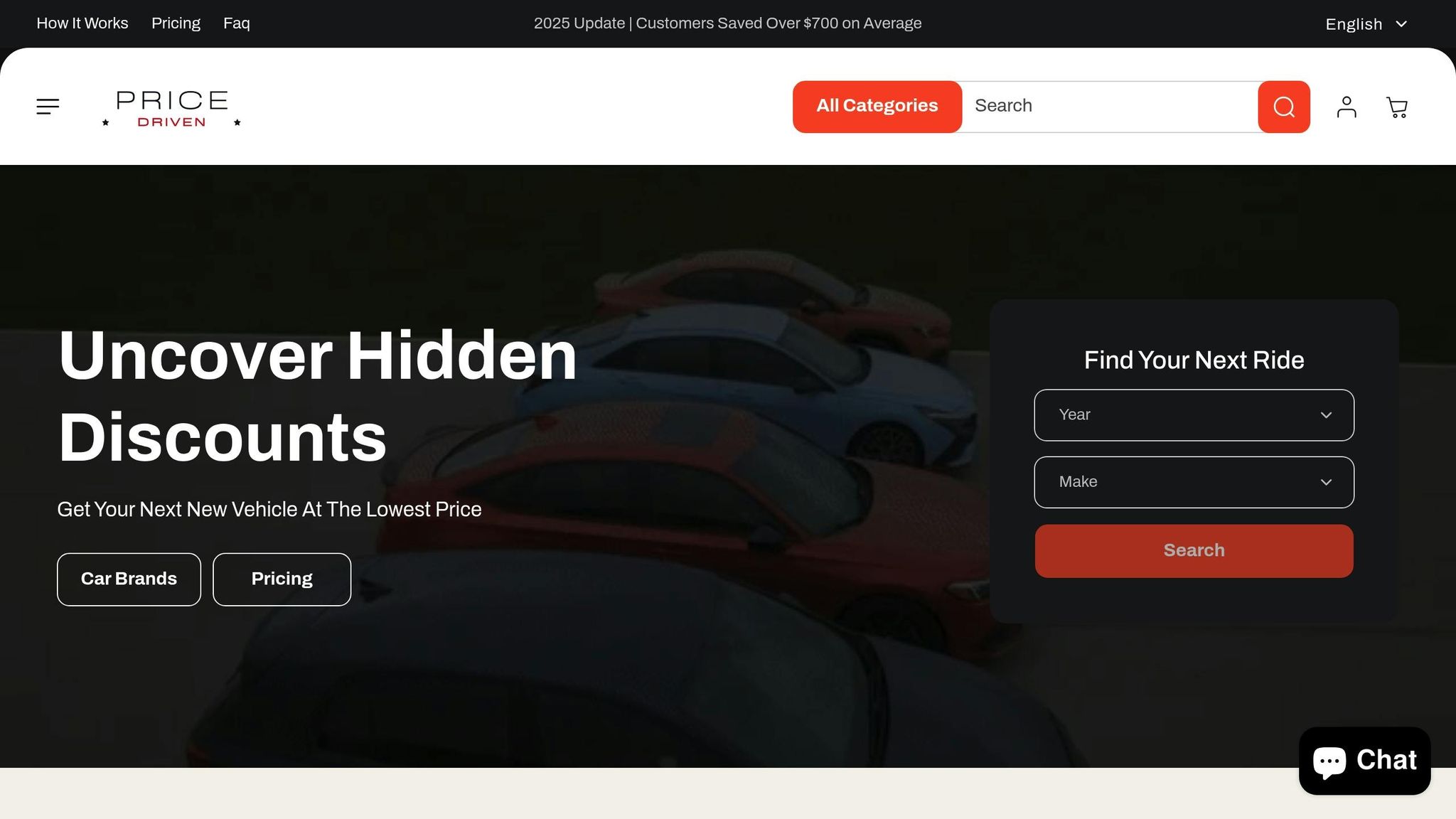
Price Driven has reimagined the car-buying experience by offering transparency that was once unavailable to everyday buyers. Through free discount reports and pre-negotiated deals, Price Driven reveals the true dealer cost while ensuring savings below the MSRP.
Key features include:
- Access to pre-negotiated deals with partner dealerships, guaranteeing savings below MSRP
- A paid service that secures guaranteed savings with upfront pricing
- A simplified process that eliminates the need for lengthy negotiations
Price Driven’s dealer network commits to clear terms with no hidden fees or last-minute surprises. The platform also provides an intuitive interface, making it easy for buyers to search for vehicles, compare deals, and access pricing information - even without prior car-buying experience.
Why Pre-Negotiated Pricing Works
Pre-negotiated pricing through Price Driven offers more than just cost savings; it reduces stress and eliminates hidden fees, empowering buyers to make informed decisions. On average, customers save over $700, with some reporting savings in the thousands. In April 2025, a customer survey revealed:
- 26 out of 32 buyers felt they made smarter purchasing decisions
- 30 out of 32 enjoyed better interactions with dealerships
- 28 out of 32 expressed satisfaction with their final price
While traditional car buying can take over 3 hours of research and negotiation, Price Driven users can access detailed pricing information in just 5 minutes.
| Feature | With Price Driven | Without Price Driven |
|---|---|---|
| Guaranteed Savings | Yes (Avg $700+ off) | Savings depend on negotiation skills |
| Time Investment | 5 mins | 3+ hours |
| Stress Level | Low | High |
For many, this streamlined process is a game-changer. One customer, Lucas H from London, ON, shared:
"Price Driven made buying my first new car so easy! The transparent pricing gave me confidence, and the pre-negotiated deal saved me hundreds."
- Lucas H, London, ON
Similarly, Olivia P from Winnipeg, MB, highlighted her experience:
"I was able to save money on my Lexus RX through Price Driven. The platform provided all the necessary details to make an informed choice."
- Olivia P, Winnipeg, MB
Access Canadian Market Data
Beyond pre-negotiated deals, having up-to-date Canadian market data is crucial for avoiding hidden fees and securing a fair price. Price Driven provides this data by unveiling the dealer’s actual cost for any new car in Canada, including hidden incentives and factory discounts. This information helps buyers understand how a car’s price compares to both the MSRP and the invoice price.
This transparency is particularly valuable in Canada’s competitive car market, which was worth $175.5 billion in 2025 and includes 4,328 dealerships. Price Driven’s discount reports equip buyers with detailed insights into available incentives, helping them negotiate with confidence.
Michael S from Vancouver, BC, shared his experience:
"Made purchasing a new SUV less stressful than my previous car. Knowing how much discount there is, helps with negotiating the price."
- Michael S, Vancouver, BC
The platform’s market data is continuously updated to reflect the latest incentives, seasonal promotions, and regional price variations. This ensures buyers always have the most accurate information when making their decisions, giving them a strong advantage in the buying process.
Conclusion: Get Better Deals by Avoiding Dealer Markups
Understanding dealer markups can save you from overspending in Canada. Surveys show that many buyers encounter added fees and markups, making it essential to stay informed.
By knowing the difference between the invoice price and MSRP, keeping track of current rebates and incentives, and spotting common markup tricks, you can avoid unnecessary costs. This awareness allows you to push back against questionable sales tactics that could inflate your final price by thousands.
Equipped with this knowledge, you can negotiate more effectively. Challenge every extra fee, shop strategically at the end of the month or year, and don’t hesitate to walk away if a deal doesn’t meet your expectations. These strategies have helped countless Canadian buyers secure fair prices through persistence and preparation.
Modern tools make this process even easier. Platforms like Price Driven, for instance, give buyers access to dealer invoice pricing, hidden incentives, and pre-negotiated deals. With these resources, you can approach dealerships with confidence. On average, Price Driven users save over $700 in just minutes compared to the hours often spent on traditional research and negotiations.
Even in provinces like Quebec, where "all-in" pricing laws require advertised prices to include most fees, staying vigilant is still critical. Hidden charges or tied selling can still occur, so informed buying and smart negotiation remain key, no matter where you are in Canada.
With the Canadian automotive market expected to hit $175.5 billion by 2025, the stakes are high. Whether you negotiate directly or use services like Price Driven to access pre-negotiated pricing, the goal is the same: securing a fair deal without falling victim to unnecessary markups.
In a market where the average new car price is $48,800, every dollar saved through informed choices makes a difference. Do your research, negotiate confidently, and take advantage of transparent tools to ensure you get the best deal possible.
FAQs
What are the best ways to negotiate and lower dealer markups on a new car in Canada?
To negotiate and potentially reduce dealer markups on a new car in Canada, start by digging into the invoice price - this is the amount the dealer pays the manufacturer for the vehicle. Knowing this figure gives you a solid foundation for understanding how much wiggle room there is for negotiation. Tools like Price Driven can be particularly helpful, offering transparent pricing and access to dealer-level discounts.
When you’re ready to negotiate, approach the conversation with a polite yet assertive tone. Keep the focus on the total price of the car rather than just the monthly payments - this helps you avoid any hidden fees or inflated costs. If the deal doesn’t align with your expectations, don’t hesitate to walk away; dealerships often reconsider to close a sale. Timing can also be a powerful tool - shopping near the end of the month or year can work in your favour, as dealers are often eager to hit their sales targets during these periods.
What hidden fees should I watch out for when buying a new car in Canada?
When buying a new vehicle in Canada, it's crucial to keep an eye out for hidden fees that can increase the final cost. Here are some common charges to watch for:
- Freight and PDI (Pre-Delivery Inspection): This covers the cost of shipping the vehicle to the dealership and preparing it for delivery. These fees typically fall between $1,500 and $2,000 or even higher.
- Documentation Fees: These are administrative fees for handling the paperwork and can differ significantly between dealerships.
- Tire and Battery Levies: In some provinces, you’ll find environmental fees added to cover recycling costs for tires and batteries.
- Extended Warranties or Add-Ons: These optional extras, such as extended warranties or protection packages, might be presented as essential but are not mandatory.
To avoid unexpected costs, always request a detailed price breakdown and ask which fees can be negotiated. Being informed about these charges can help you stick to your budget and dodge any unwelcome surprises.
How do supply and demand influence dealer markups, and how can understanding this help you save on your next car purchase?
When it comes to dealer pricing, supply and demand play a huge role. If a vehicle is in high demand but there aren't many available, dealers often hike up the price to make the most profit. On the flip side, when there’s more stock than buyers, prices usually drop as dealers look to move inventory quickly.
If you’re looking to save some cash, timing your purchase wisely can make a big difference. Shopping during slower sales periods - like the end of the month or year - can often lead to better deals. Plus, doing your homework on market trends and staying open-minded about different models can help you steer clear of paying inflated prices.































































